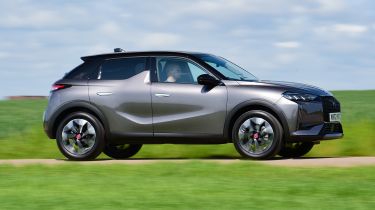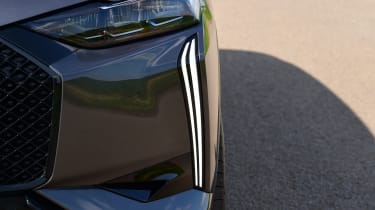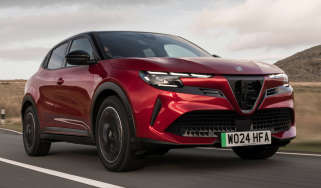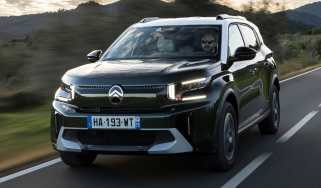DS 3 review - MPG, running costs & CO2
Every engine is fairly economical, and the all-electric E-Tense variant offers a decent range
The DS 3 was another landmark in the history of a fast-evolving brand, because it was the first DS available with the choice of a petrol, diesel or all-electric powertrain – although the diesel has since been discontinued in the UK. It won’t be the last electric DS; the brand aims to go fully electric within just a few years. We’ve reviewed the DS 3 E-Tense separately, but it offers enough range for most buyers and is quick to recharge – we like that the fast-charging capability comes as standard.
DS 3 MPG & CO2
Plentiful powertrain options should keep the DS 3’s appeal nice and broad, with petrol and mild-hybrid engines satisfying the majority of urban and medium-mileage drivers, and an EV for those willing to spend a little more initially to get a zero-emissions car that's cheap to run thereafter.
With a 1.2-litre PureTech petrol fitted, there's the option of 99bhp, 128bhp power outputs. The first is fitted with a six-speed manual gearbox, but the more powerful engines can only be specced with an eight-speed automatic gearbox. Choose the 128bhp petrol and it'll return up to 46.3mpg while emitting 135g/km, but stick with the 100bhp version of the same engine and you’ll get an official fuel economy figure of up to 49.6mpg with CO2 emissions starting at 128g/km. As a result, Benefit-in-Kind liability for company-car drivers is pretty similar to its rivals but the smallest petrol engine will be the cheapest of the combustion engines to tax for business users.
More reviews
That’s unless they plump for the mild-hybrid ‘DS 3 Hybrid’ launched in 2024. This uses the same 1.2-litre PureTech petrol, but with a new six-speed automatic gearbox and extra tech that can recuperate energy to give the engine a small helping hand. This adds up to an efficiency gain of around 20% and resulting CO2 emissions of 112g/km.
Diesel engines have been discontinued entirely – although the BlueHDi previously offered slightly better fuel economy, its CO2 emissions were only marginally better than the least emitting regular petrol engine, so sat in the same BiK band for company car owners.
These figures are competitive for a small SUV, but the battery-electric DS 3 E-Tense of course has zero emissions, qualifying it for a minimal BiK rate. Road tax is also free for electric cars (until the 2025 regulation change), with the petrol and diesel variants costing owners around the standard annual rate.
The E-Tense has a driving range of up to 270 miles from a single charge, which is considerably more than both the cheaper version of the Nissan Leaf (168 miles) and Mazda MX-30 (124 miles). The fact that its 54kWh lithium-ion battery pack can also be topped up to 80% capacity in just half an hour using a public fast-charger should be enough to convince cautious first-time EV buyers that longer trips are possible. A full charge from a 7.4kW home wallbox takes seven and a half hours.
Insurance groups
Insurance groups for the DS 3 range between 15 and 21 (out of 50) for the petrol versions, and between 27 and 31 for the electric E-Tense models.
Warranty
The DS 3 comes with a fairly standard three-year/60,000-mile warranty, matching that from the likes of Volkswagen and Audi, but not as good when compared with the five-year/unlimited mileage warranty of the Hyundai Kona and seven-year warranty of the Kia Niro.
Servicing
For those customers who'd prefer to spread the cost of servicing, monthly payment coverage plans will be available for maintenance costs.
Which Is Best?
Cheapest
- Name1.2 HYBRID 145 Pallas 5dr e-DSC
- Gearbox typeSemi-auto
- RRP£32,350
Most Economical
- Name1.2 HYBRID 145 Pallas 5dr e-DSC
- Gearbox typeSemi-auto
- RRP£32,350
Fastest
- Name1.2 HYBRID 145 Pallas 5dr e-DSC
- Gearbox typeSemi-auto
- RRP£32,350















